CEA Alliance Applauds Introduction of Bipartisan Senate Bill to Scale Supply Chain Loan Guarantee Program at USDA
Read the full story from HortiDaily …
Read the full story from HortiDaily …
Indoor vertical farming has seen significant growth. In fact, the industry is expected to exceed $35.3 billion by 2032, up from $5.6 billion in 2022. It is also expected to achieve a compound annual growth rate of 20.8% by 2032, according to Market.us.
There’s a lot driving the trend. Supply chain issues have disrupted distribution for traditional farms. The climate crisis will continue to reduce crop yields. We’re seeing increasing demand for year-round access to fresh fruits and vegetables. And a growing population means we need more food for more people.
The world needs indoor and vertical gardening — and investors have taken notice. Last year, indoor vertical farming investments surpassed $2.4 billion.
Whether that type of investment continues is uncertain. According to PitchBook’s Q1 2023 AgTech Report, indoor farms raised $75.8 million globally across 14 deals in the first three months of 2023, down 70% in deal value from the previous quarter and 91% year-over-year. So far this year, there’s less VC funding available to fill indoor farmers’ coffers. It doesn’t mean the money’s not available; it just may be harder to obtain.
Indoor farmers are facing some headwinds right now. Generally speaking, indoor and vertical growing facilities come with hefty operating costs. These organizations need significant capital to build out facilities and buy equipment.
Additionally, these facilities require a great deal of energy to operate, and that is particularly challenging as we saw electricity prices rise 10.2 percent over the last year, according to the U.S. Bureau of Labor Statistics. Organizations in the industry need cash reserves to cover these high costs.
Indoor vertical gardening also requires highly skilled, qualified people to run the operations. Organizations are competing for workers with a unique skill set in a small talent pool. They need the money to both recruit them and pay them their value.
For many organizations, the cost of building and running their operations is bleeding the equity well dry. They simply don’t have the capital for activities that enable them to scale, like expanding their facilities, hiring the right people, and marketing their product.
Overcoming these challenges requires thinking outside of the box in terms of funding.
With the potential for less money coming in from outside sources—and both the cost of inflation and energy not going anywhere in the near term—indoor and vertical farming companies will need to figure out ways to stretch the money they do have.
One way to do that is through equipment leasing, which is a flexible low-cost way to finance the type of equipment needed to build and outfit an indoor growing facility. CSC Leasing, for example, offers a non-dilutive equipment lease line up to $20 million that doesn’t have warrants or require restrictive covenants.
Also, what many business owners don’t know is that they may be eligible for a sale leaseback, where an equipment financier purchases pre-owned equipment and places it under lease. For example, CSC offers up to 100% reimbursement, providing organizations with a much-needed influx of cash.
Equipment leasing can enable organizations to:
Ultimately, equipment leasing can provide indoor and vertical gardening organizations with the cash they need to continue to grow the business—even as challenges persist.
 If you would like to learn more about CSC’s variety of solutions, contact Jess Hawthorne at jhawthorne@cscleasing.com or 804-239-7368.
If you would like to learn more about CSC’s variety of solutions, contact Jess Hawthorne at jhawthorne@cscleasing.com or 804-239-7368.
In the Cayman Islands, Freight Farms and Primitive Greens are working to overturn the status quo of food supply.
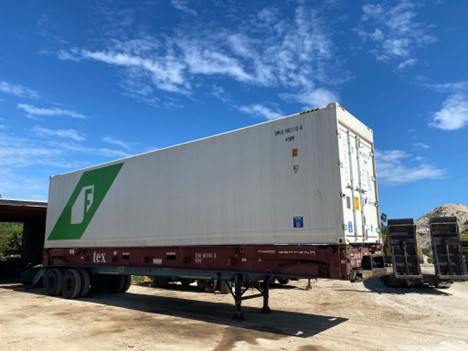
With the Cayman Islands’ beauty comes a challenging food supply chain. The islands only produce about 1% of their own food, with the rest of the food they consume sourced from Jamaica, Honduras, and, largely, the United States. Relying on shipped produce results in precarious food security. To make matters worse, there are very few direct shipping lines from food-producing Caribbean islands to the Cayman Islands. With lengthy shipping routes, the fresh food that the Cayman Islands ultimately receives is no longer very fresh … and it’s also very pricey.
Enter Freight Farms’ vertical shipping container farms. Codi Whittaker, a young recent college grad, and business partner Kerry Lawrence purchased three container farms from Freight Farms to launch their business, Primitive Greens, with the goal of increasing the sustainability of life on the Cayman Islands.
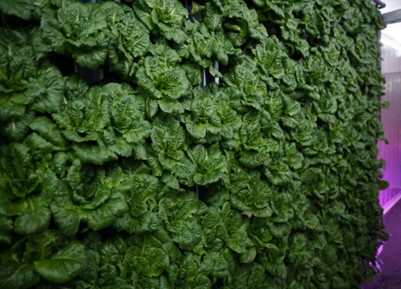
The three Freight Farms allow Primitive Greens to defy the very things that make fresh food so scarce on the island: a lack of arable land, extreme weather which makes farming near-impossible, and those long shipping lines. Instead, Primitive Greens grows right near consumers, inside high-tech shipping containers right on Grand Cayman island. They work the container farms’ perfectly climate-controlled environment to their advantage to grow beautiful, coveted produce. This, they sell to grocery stores and restaurants on the island at a competitive price — offering island establishments and residents reasonably priced, long-lasting, quality produce.

To increase the sustainability of the business, Primitive Greens plans to install a solar and energy storage microgrid that will fuel the farms with 100% clean energy. Energy cost is up everywhere, and the Cayman Islands are not immune. Currently, Primitive Greens pays the equivalent of $0.40 USD per kilowatt hour of electricity — mostly from dirty diesel fuel offered by the local utility. (By comparison, the current average cost of energy in Los Angeles is about $0.26 USD per kilowatt hour.) The solar project, which features solar panels floating in the water of an old quarry, will not only make growing food more sustainable. It will also provide resiliency to the island, through power that is available 24/7 and independent of the electrical grid.
“We’re basically selling the community cheaper, healthier, more sustainable, locally grown food; we’re providing power for less than half the cost of diesel; we’re creating food security; we’re creating jobs; and we’re not clearing any land.” — Codi Whittaker, Co-Founder and Operator of Primitive Greens
Primitive Greens intends to send Freight Farms to each of the three Cayman Islands, to alleviate food security for the entire territory. Ultimately, they strive to be the providers of fresh produce for Cayman.
Primitive Greens was recently featured in a webinar hosted by Freight Farms on the potential for indoor farming in the Cayman Islands. Watch the conversation at https://www.freightfarms.com/visit-freight-farms/primitive-greens-live-webinar.
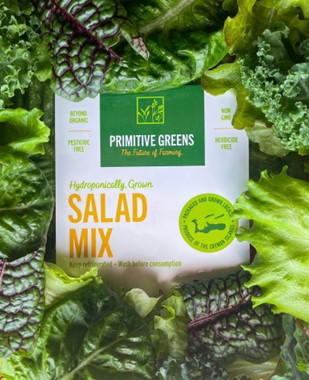 Freight Farms has seen incredible growth in the adoption of their technology in the Caribbean islands, many of which face challenges similar to the Cayman Islands’. From Turks and Caicos to the Bahamas, islanders are discovering the power of controlled environment agriculture to revolutionize food quality and access for themselves and their communities.
Freight Farms has seen incredible growth in the adoption of their technology in the Caribbean islands, many of which face challenges similar to the Cayman Islands’. From Turks and Caicos to the Bahamas, islanders are discovering the power of controlled environment agriculture to revolutionize food quality and access for themselves and their communities.
About Freight Farms:
Founded in 2012, Freight Farms debuted the first vertical hydroponic farm built inside an intermodal shipping container with the mission of democratizing and decentralizing the local production of fresh, healthy food. Since its inception, Freight Farms has refined its product offering to arrive at the Greenery™ S container farm. With global customers ranging from small business farmers to the corporate, hospitality, retail, education, and nonprofit sectors, Freight Farmers make up the largest network of connected farms in the world. AgTech Breakthrough named Freight Farms the 2022 “IoT Monitoring Solution of the Year” for its farmhand® IoT automation software.
To learn more, visit freightfarms.com or connect on Facebook, Instagram, LinkedIn, Twitter, or TikTok.
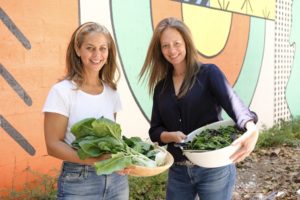
Indoor AgCon 2022 was full of inspiring and informative sessions and speakers. The main takeaway: Controlled Environment Agriculture is the future of food. Growing food in a controlled environment provides a stable and dependable framework that is currently missing in our food supply chain. The ability to grow food 365 days a year regardless of season or location without pesticides or harsh chemicals is revolutionary.
I was invited to speak on a panel discussion about shipping container farms and represent Imagine Farms, which is funny because we don’t identify as a shipping container farm although we use shipping containers as the building blocks of our system.
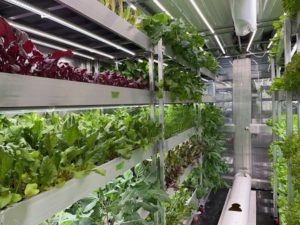 We differentiate ourselves from Shipping Container Farm businesses (Freight Farms, Crop Box, etc.) as we are not in the business of building and selling turnkey systems.
We differentiate ourselves from Shipping Container Farm businesses (Freight Farms, Crop Box, etc.) as we are not in the business of building and selling turnkey systems.
Rather, we worked with a designer to build our system, using the insulated shipping containers as a shell. Currently, we use the shipping containers as grow rooms and adjacent functional spaces (walk in cooler, pack room, nursery). At this time, we have 8 rooms dedicated to Leafy Greens and Petite Root vegetable production and 2 rooms dedicated to Mushrooms.
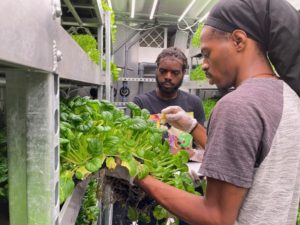 This process has inspired our vision to build a large scale production farm with groups of grow rooms that work together to grow a variety of crops under one roof – this might mean a warehouse farm with grow rooms built out and/or continuing to utilize shipping containers for this purpose (indoor or outdoors – or a combo of both). We are in the early stages of raising a Series A to build 15-20 grow rooms under one room with the addition of automation to begin to fulfill the demand in South Florida.
This process has inspired our vision to build a large scale production farm with groups of grow rooms that work together to grow a variety of crops under one roof – this might mean a warehouse farm with grow rooms built out and/or continuing to utilize shipping containers for this purpose (indoor or outdoors – or a combo of both). We are in the early stages of raising a Series A to build 15-20 grow rooms under one room with the addition of automation to begin to fulfill the demand in South Florida.
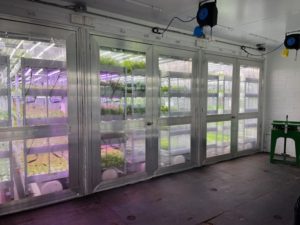 Cheryl and I started in one shipping container farm that we built ourselves (with the designer) – and did it all ourselves for the first 2 years – we acquired hands-on experience growing as well as all the different aspects involved with growing and distributing food; integrated technology, tested different crops, sales, marketing, distribution, accounting, packaging, food safety, etc. Most importantly, we were able to test the market which is the framework for building the business.
Cheryl and I started in one shipping container farm that we built ourselves (with the designer) – and did it all ourselves for the first 2 years – we acquired hands-on experience growing as well as all the different aspects involved with growing and distributing food; integrated technology, tested different crops, sales, marketing, distribution, accounting, packaging, food safety, etc. Most importantly, we were able to test the market which is the framework for building the business.
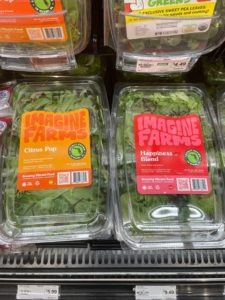 When we started Imagine Farms we appreciated the positive attributes that come with growing in a controlled environment; significant decrease in water usage when compared to field farming, growing without pesticides, and the positive aspects of ‘farm to table’ as a service. Now, it is evident that natural resources are scarce – specifically water, arable farmland and access to minerals for fertilizer.
When we started Imagine Farms we appreciated the positive attributes that come with growing in a controlled environment; significant decrease in water usage when compared to field farming, growing without pesticides, and the positive aspects of ‘farm to table’ as a service. Now, it is evident that natural resources are scarce – specifically water, arable farmland and access to minerals for fertilizer.
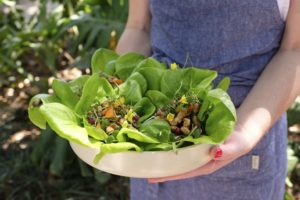 We are facing a grain shortage that will drive up the cost of basic food and other commodities because of the war in Ukraine, while our physical resilience and mental health depend on access to fresh, healthy food. The more intelligent, motivated and passionate individuals exposed to the industry, the better. Shipping container farms placed in schools, universities, public programs and start-ups might be the greatest vehicle to accelerate this industry.
We are facing a grain shortage that will drive up the cost of basic food and other commodities because of the war in Ukraine, while our physical resilience and mental health depend on access to fresh, healthy food. The more intelligent, motivated and passionate individuals exposed to the industry, the better. Shipping container farms placed in schools, universities, public programs and start-ups might be the greatest vehicle to accelerate this industry.
Learn more about Imagine Farms by visiting their website or calling 844.204.0002.
December 14, 2021 – BrightFarms CEO Steve Platt and Cox Enterprises VP Steven Bradley will lead the opening morning keynote address for the 9th annual edition of Indoor Ag-Con, scheduled for Feb. 28 – Mar. 1, 2022, at Caesars Forum, Las Vegas, Nev. Themed “Growing Your Business,” the premier trade show and conference for indoor|vertical farming will give attendees the opportunity to explore new resources on the expo floor and hear from Platt & Bradley, other CEOs, thought leaders and industry experts from today’s cutting-edge farms and CEA companies.
“When Cox Enterprises acquired BrightFarms earlier this year, the industry took notice,” says Brian Sullivan, co-owner, Indoor Ag-Con LLC. “We are thrilled to welcome Steve Platt and Steven Bradley to our keynote stage to share their exciting growth plans and vision for the future of our industry. It promises to be an inspiring kick-off to this year’s conference!”
During the opening morning keynote – 8:00– 8:50 am on Monday, Feb. 28, 2022 — Platt and Bradley will share how BrightFarms and Cox are working together to transform the indoor farming industry – further strengthening its position as a sustainable platform for the future.
Steve Platt is CEO of the mission-driven indoor farming leader BrightFarms, and a veteran Consumer Packaged Goods (CPG) executive with a proven record of growing brands. Under Steve’s leadership, BrightFarms was acquired by lead investor Cox Enterprises in 2021, resulting in a clear roadmap for future growth and a positive exit for initial investors. His passion for BrightFarms’ mission and products led him to the company, which grows pesticide-free leafy greens in its six high-tech facilities across the country. BrightFarms grows and delivers its greens to local retailers as soon as 24-hours from harvest, producing fresher and more nutritious salads, and significantly reducing overall environmental impact compared to West Coast farms.
As Vice President of Cox Cleantech for Cox Enterprises, Steve Bradley is responsible for building new cleantech verticals that tackle sustainability challenges while driving profitability, topline growth and diversification of the core business. With Bradley’s leadership, the Cox Cleantech team is investing in and acquiring solutions that positively transform key sectors including food, waste and energy to more sustainably meet the needs of the world’s rapidly growing global population.
ROBUST 2022 CONFERENCE SCHEDULE NOW IN DEVELOPMENT
In addition to Platt & Bradley’s opening morning keynote, look for additional announcements coming soon on other headliner keynote presentations planned for the February edition. The 2022 conference will also include a full roster of panel discussions offering a deep dive into three core tracks – Grower, Business & Technology.
Attendees will find more new initiatives and show highlights to explore in February, including:
CO-LOCATION WITH NATIONAL GROCERS ASSOCATION SHOW
New for 2022, Indoor Ag-Con will co-locate with the National Grocers Association (NGA) Show, the leading trade show and conference for independent grocers, offering even more networking and business opportunities for attendees and exhibitors alike. The NGA Show and Indoor Ag-Con visitors will have access to all exhibits, and discounts will be available for cross-over educational event attendance. Look for more details coming soon.
EXPANDED EXHIBIT FLOOR
2022 will also welcome the largest expo floor yet for Indoor Ag-Con. From irrigation and LED lighting to environmental control systems, substrates, greenhouse equipment, energy solutions, business services and more, attendees will have the chance to see the latest introductions and innovations from some of the biggest names in the business, as well as emerging leaders.
MORE NETWORKING
Exhibitors and attendees can enjoy complimentary luncheons on the show floor each day, a show floor cocktail reception, breakout sessions and other opportunities to reconnect with friends and meet new business partners.
QUICK FACTS:
WHEN: Monday, Feb. 28 – Tuesday, Mar. 1, 2022
WHERE: Caesars Forum, 3911 Koval Lane, Las Vegas, NV 89101
INFO: For information on exhibiting or attending visit www.indoor.ag or email suzanne@indoor.ag
ABOUT INDOOR AG-CON LLC
Founded in 2013, Indoor Ag-Con has emerged as the premier trade event for vertical farming | indoor agriculture, the practice of growing crops in indoor systems, using hydroponic, aquaponic and aeroponic techniques. Its events are crop-agnostic and touch all sectors of the business, covering produce, legal cannabis | hemp, alternate protein and non-food crops. In December 2018, three event industry professionals – Nancy Hallberg, Kris Sieradzki and Brian Sullivan – acquired Indoor Ag-Con LLC, setting the stage for further expansion of the event. More information: www.indoor.ag
Indoor Ag-Con is excited to announced that 80 Acres Farms Co-Founder & CEO Mike Zelkind will lead one of the headliner CEO Keynote presentations during our October 4-5, 2021 edition at the Hilton Orlando,
Utilizing world-class technology and analytics, 80 Acres Farms offers customers a wide variety of pesticide-free food with a longer shelf life that exceeds the highest food safety standards. And, this vertical farming leader has been making headlines over the past year in a number of areas — from the opening of a new farm to expanded retail partnerships, new research iniatitives and more.
Ahead of his upcoming Indoor Ag-Con October keynote, we had the chance to catch up with Mike to learn more about his company’s exciting developments AND his thoughts on the fast-growing indoor farming industry itself.
 It’s been a fantastic year for us! We opened our largest automated farm in the Fall of 2020, scaling our technology and production 10x greater than prior. Yield, quality, and efficiencies exceeded expectations out of the gate and allowed us to hit our unit economics.
It’s been a fantastic year for us! We opened our largest automated farm in the Fall of 2020, scaling our technology and production 10x greater than prior. Yield, quality, and efficiencies exceeded expectations out of the gate and allowed us to hit our unit economics.
A few months later, we announced our expanded partnership with Kroger, offering nine products across over 300 stores in 4 different regions.
We were also proud to achieve the Kosher certification for our products, one more tool to communicate our promise of exceptionally high quality to consumers.
Lastly, we were honored to tell the story of 80 Acres Farms on a global stage on the BBC docuseries “Follow the Food.” It was inspiring to showcase the farms we built in our revitalizing city of Hamilton, OH.
Tisha and I have been in the food industry for over 30 years each, running manufacturing and operations for some of America’s most-loved brands. We have worked together for more than a decade and decided to leave our careers and start our venture, 80 Acres Farms.
We wanted to bring fresh food closer to communities, and we felt indoor farming was the answer. I am 80 Acres Farms CEO and Tisha, President. When we built our first commercial farm, not everything scaled as planned. Luckily, we had a fantastic partner, Priva, that was there to help us work thru the complexities.
80 Acres realized that to scale vertical farming, we had to collaborate with world-class companies, and Infinite Acres was born. We launched Infinite Acres in 2019 with our two partners Ocado, UK’s largest online grocer, and Priva, global leading horticulture innovators.
Tisha became CEO of Infinite Acres and resides in the Netherlands half the time each month. Infinite Acres now oversees the technology involved in building and scaling farms globally.
80 Acres is the preferred operator to create an end-to-end solution for customers. The partnership has strengthened our global presence and ability to scale the technology.
 Retailers and consumers have a growing appetite for fresh food grown indoors. Retailers want fresher food with shorter supply chains to significantly reduce supply inefficiencies, inconsistent quality and reduce food waste. In addition, consumers are more aware of how their food is grown and its effect on the environment. Therefore, they want food grown with zero, not fewer, pesticides with the highest nutritional value and grown close to store for longer-lasting freshness.
Retailers and consumers have a growing appetite for fresh food grown indoors. Retailers want fresher food with shorter supply chains to significantly reduce supply inefficiencies, inconsistent quality and reduce food waste. In addition, consumers are more aware of how their food is grown and its effect on the environment. Therefore, they want food grown with zero, not fewer, pesticides with the highest nutritional value and grown close to store for longer-lasting freshness.
As for the industry, the technology advancements are maturing, better suited for the environments, and costs are coming down to make getting into the business more attainable and farms’ ability to become profitable.
Breeders are beginning to focus on identifying seed varieties beyond lettuce to find characteristics best suited for indoor environments, increasing yield, flavor, and quality.
The advancements in lighting, robotics, automation, breeding, and standardization have led to scaling. The industry and technology weren’t quite ready before now. The culmination of consumer desires and technology advancements has led to extreme growth for the industry. Together with, the great companies you mention above as well as the many other pioneers, we are reinventing the produce industry. It’s an exciting time for agriculture!
Years ago, we build our R&D facility In Arkansas. Late last year we began upgrading It to become a world class R&D Center of Excellence. Our neighbor, University of Arkansas, Is a logical first partner for the facility, but many more are coming soon. The partnerships we are forming are wholistic.
Indoor Ag-Con kicked off its Indoor Ag-Conversations webinar series in June 2020 . Partnering with United Fresh , we hosted a webinar addressing produce trends & business opportunities in the Covid crisis. Moderated by United Fresh President & CEO Tom Stenzel, the panel included Paul Lightfoot, CEO and founder of BrightFarms, Alex DiNovo, president and COO of DNO Produce, and Victor Verlage, senior director of Agriculture Strategy Development at Walmart.
Kate Spirgen, editor of Garden Center, Greenhouse Management & Produce Grower magazines penned a terrific recap. In it, she outlined five key takeaways from the panel touching on produce trends and business opportunities in the Covid crisis:
Panelists agreed that berries will be among the next hot items in CEA since growers can provide tastier options with longer shelf lives than conventional farms. “How variable is a strawberry’s taste when it’s conventional?” DiNovo asked. “You can have one that tastes fantastic and you can have one that tastes like dirt. You can have the same flavorful berry without Mother Nature wreaking havoc on it.”
Highly perishable items with complex supply chains are ripe for disruption, panelists said.
“What we’re interested in is beyond the shelf life, we want home life for the customers,” Verlage said. “We don’t want them to waste produce because it goes bad quickly.”
From a marketing standpoint, DiNovo said indoor agriculture operations shouldn’t fight a conventional battle. By creating new names for products and branding them to stand out, growers can change the game.
“Create its own value by calling it something else,” he said. “If you call it by a conventional name, you’re going to compete on a conventional price basis.” The coronavirus has impacted everything from supply chains to shopping habits.
DiNovo said the economic impact of the coronavirus has led to a greater demand to keep money in the local economy. this is true whether it’s spending inside the community or providing jobs.
“That’s what local means to me more than anything else — it’s local impact,” he said.
Lightfoot said he sees an opportunity to promote safety due to a smaller supply chain. He added that the current salad industry has seen issues with safety in the recent past.
“One farm’s contamination could have a bigger impact since more products are coming into contact with each other,” he said, stating that a longer supply chain makes tracking more difficult. “Those structural challenges don’t exist in our model as they do in the incumbent supply chain model.”
Creating new names and brands for products can help your CEA operation stand out in the marketplace. The year-round nature of indoor agriculture could also give CEA operations a leg up on labor.
Farm labor shortages, which he said have worsened due to the current administration’s policies on labor and immigration, have only been made more difficult by COVID-19. Housing and transportation have left farm employees more vulnerable to the disease.
“When this is over, borders will probably be less open, not more, so this issue will probably become worse,” he said.
“That’s what local means to me more than anything else — it’s local impact,” said Alex DiNovo, president and COO of DNO Produce. CEA operations are better equipped to control entry to facilities. And, year-round labor provides more stability in the workforce.
Verlage said Walmart is looking for ways to mix big and smaller growers since different growers will bring solutions better suited to different communities.
“We are trying to figure out what is the right size project for the demand we face in different stores,” he said. “It has to be affordable, good nutritious food so that we can help everyone enjoy healthy food.”
 The UN World Food Programme recently announced that over a quarter of a billion people around the globe could suffer acute hunger by end of this year in large part owing to the coronavirus crisis — a doubling of the 130 million people estimated to experience severe food shortages last year.
The UN World Food Programme recently announced that over a quarter of a billion people around the globe could suffer acute hunger by end of this year in large part owing to the coronavirus crisis — a doubling of the 130 million people estimated to experience severe food shortages last year.
Such forecast makes all the more notable the three-way split screen that has been flickering in the news recently across the United States — showcasing barren shelves at grocery stores, miles of cars and people lined up at food banks, and milk by the millions of gallons being dumped in Wisconsin and Ohio as well as tons of fresh vegetables being plowed back into the soil in Idaho and Florida.
As jarringly incongruous and disturbing such split-screen images are, they have helped bring into stark relief the surprisingly sclerotic rigidity of the U.S. food supply chain amid the prodigious disruptions caused by the coronavirus pandemic.
At the heart of America’s fresh-produce supply-chain predicament in the time of Covid-19 are the double strands that make up this supply chain — running in parallel and perhaps even looping around each other, but never quite meeting and converging.
One supply-chain strand supplies the food service channels of restaurants, schools, hotels, offices and coffee shops, while the second strand supplies the retail channels of grocery stores, supermarkets and other retail outlets.
Never do these two fresh-produce supply-chain strands converge in normal times, but remain distinctly discrete and resolutely independent of one other.
And this explains how when Covid-19 shuttered in quick succession myriads of restaurants, schools and coffee shops across the country, the producers and the roughly 15,000 suppliers that cater to the $300-billion U.S. food service industry are suddenly unable to sell the bulk of their produce.
And in attempting to pivot from the food service supply chain to the retail supply chain, they find themselves confronted, not only with the time-consuming and costly repackaging and relabeling requirements for their produce, but also with the daunting task under time duress of finding proper contacts as well as developing the needed contracts to deliver and sell their produce through the retail supply chain instead.
With many producers and food service suppliers completely unprepared and ill-equipped to accomplish the foregoing, many are forced to make the final dreadful choice of destroying millions of pounds of fresh food that they can no longer sell.
The industry trade group Produce Marketing Association estimates that an approximately $5-billion worth of fresh fruits and vegetables have already gone to waste in the United States.
Thus, redesigning America’s fresh-produce supply chain post Covid-19 to make it certainly more nimble and flexible in routing and rerouting as needed the logistical paths that connect from which farms to which tables is absolutely imperative.
Equally imperative in such redesign is also to make the fresh-produce supply chain definitively more inclusive and sustainable.
Here are six essential touchstones that should inform the much-needed re-engineering of America’s double-stranded fresh-produce supply chain after Covid-19.
(1) Regionally and locally-based — greater geographical proximity between the re-engineered supply-chain sources (producers) and sinks (retailers and food service providers) fosters increased resilience in terms of shorter distance, quicker access to produce, and allowing for time to repackage and relabel produce in events where there is need to switch supply-chain strands; proximity also promotes sustainability in terms of shorter food miles, lower concomitant greenhouse-gas emissions, less food waste during transport as well as greater produce quality and freshness;
(2) Inclusion of small and medium-scale producers — Addition of medium and small-scale producers in the re-engineered supply chain not only promotes economic inclusivity, but fortifies the supply chain’s resilience given the relative ability of medium and small-scale producers to react more quickly and nimbly to projected changes in demands in the supply-chain sinks;
(3) Mixing of food service and retail clients in the chains — Combining to the extent possible food service and retail sinks in the re-engineered supply chains fosters resilience in regard to establishing and maintaining clients in both strands of the supply chain, and thus providing greater facility in events where produce needs rerouting from one supply-chain strand to the other.
(4) Inclusion of indoor and/or vertical farm producers — Addition of indoor and/or vertical farms significantly boosts the resilience of the re-engineered supply chain in terms of increased supply reliability (independent of weather, season, climate and geography), higher produce yield and quality, increased food safety owing to cleaner and controlled-environment operations, and amenability to automation of operations for labor efficiency. The recent decision by Wendy’s, for instance, to source all of its tomatoes for all of its 6,000 restaurants across North America from indoor hydroponic greenhouses has helped enable the American fast-food company to uphold its motto of Always Fresh by way of ensured quality as well as enhanced food safety, predictability, reliability and product traceability for its now far more dependable fresh-tomato supply chain;
(5) Linking producer farms with sources of renewable energy — Incentivizing and linking producer farms to ready sources of renewable energy, including solar and wind power plants, promotes enhanced environmental sustainability. Especially in temperate regions with reduced solar irradiance in certain periods of the year, producer farms may also be linked with wastewater treatment plants that generate renewable natural gas from digested organic wastes as exemplified by the Newtown Creek Watewater Treatment Plant in Brooklyn, New York City; and,
(6) Certification of the supply chain nexus — Certification for resilience, inclusiveness and sustainability (that is, a RISe certification) adjudicated and awarded by an independent body to supply-chain nexus of producers, suppliers and retail/food service clients would be a great boon to the fresh-produce distribution industry as well as to consumers, the general public and the environment.
With Covid-19 temporarily decimating the global economy and in the process exposing the vulnerability of partial paralysis of the American fresh-produce supply chain amid the chaotic disruptions wrought by the pandemic, a silver lining that has emerged is that America’s fresh-produce supply chain can very well be re-engineered for a much-needed upgrade — toward greater resilience, inclusiveness and sustainability.
_______________________________
Dr. Joel L. Cuello is Vice Chair of the Association for Vertical Farming (AVF) and Professor of Biosystems Engineering at The University of Arizona. In addition to conducting research and designs on vertical farming and cell-based bioreactors, he also teaches “Integrated Engineered Solutions in the Food-Water-Energy Nexus” and “Globalization, Sustainability & Innovation”. Email cuelloj@arizona.edu.